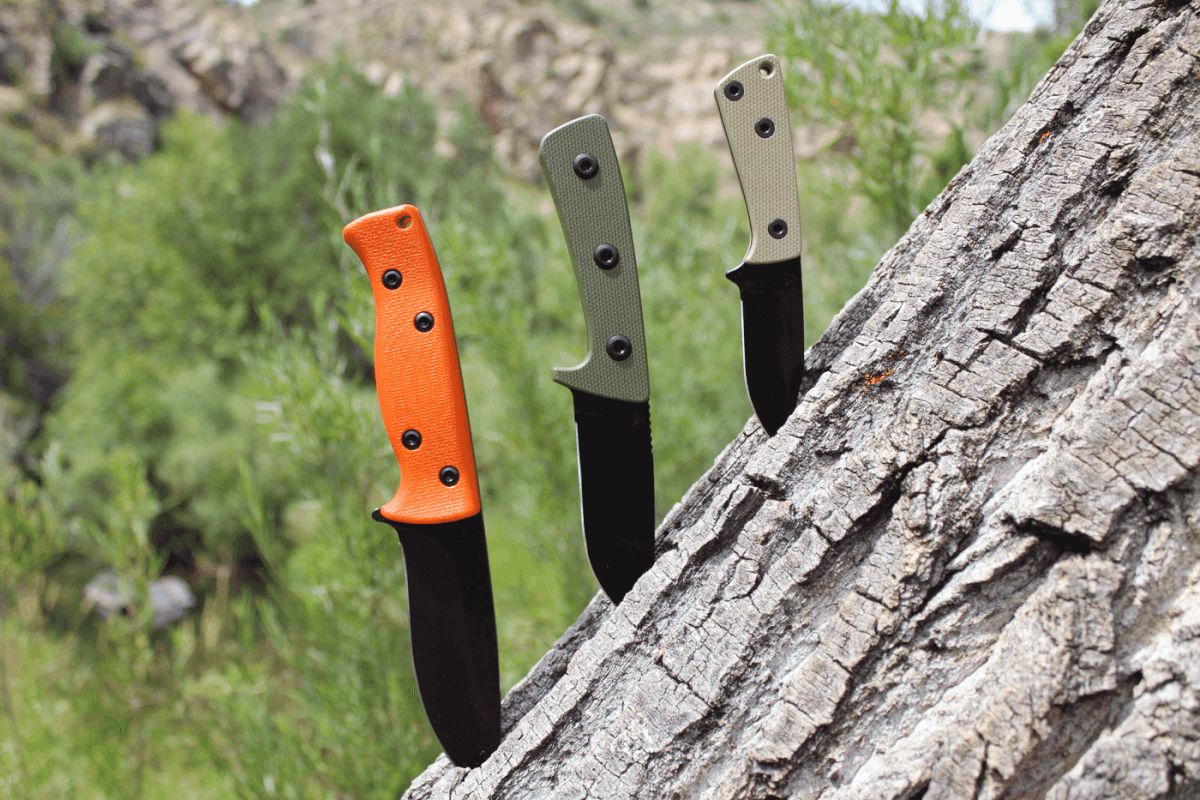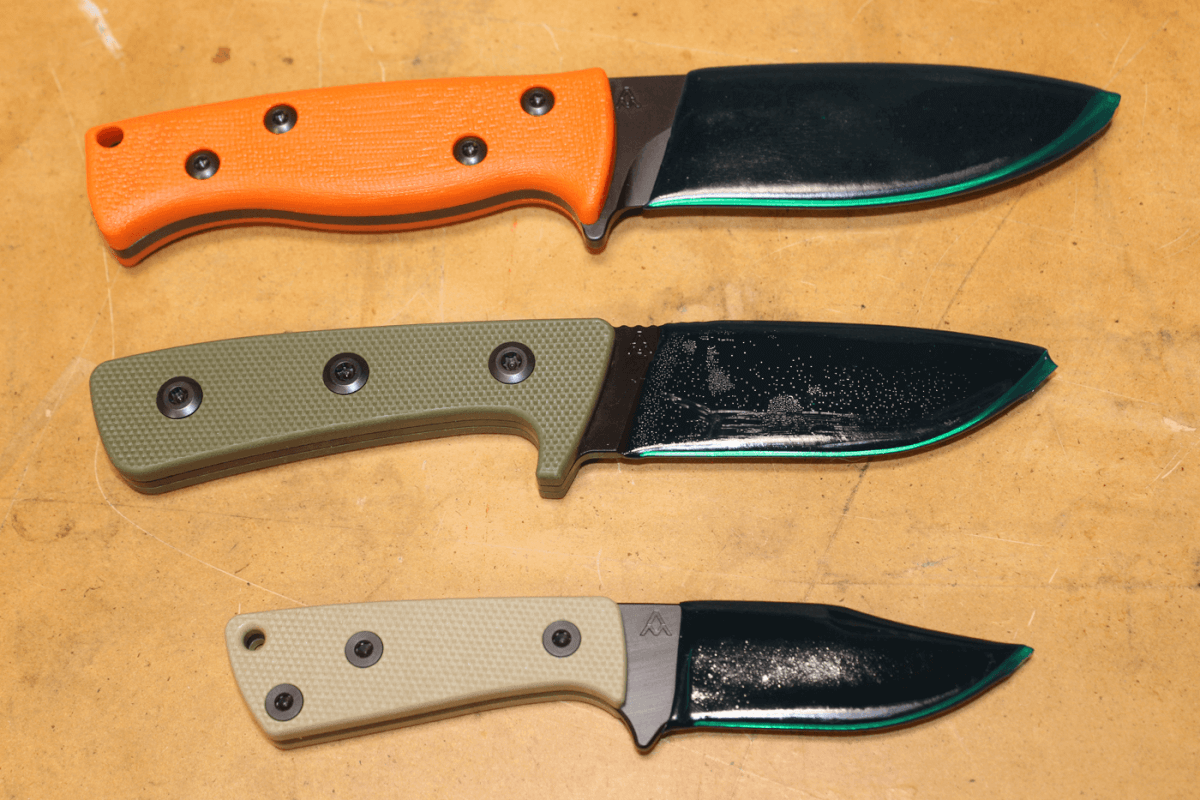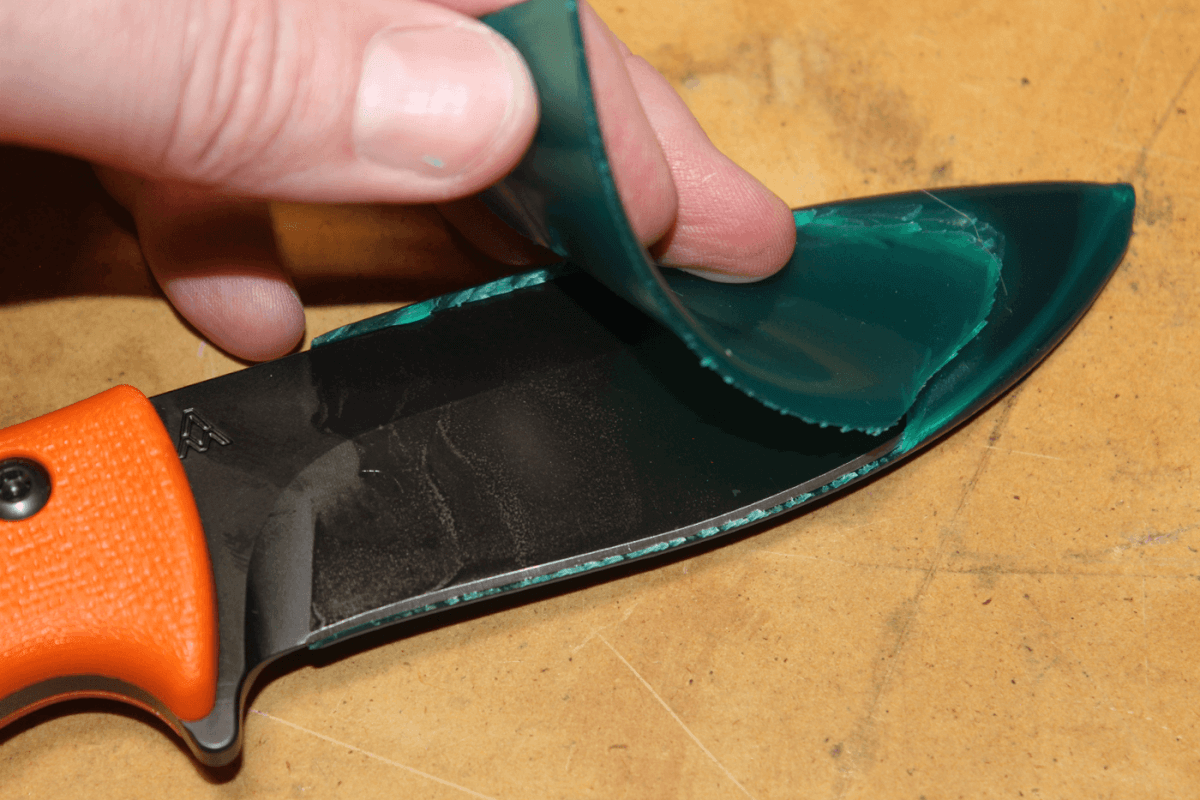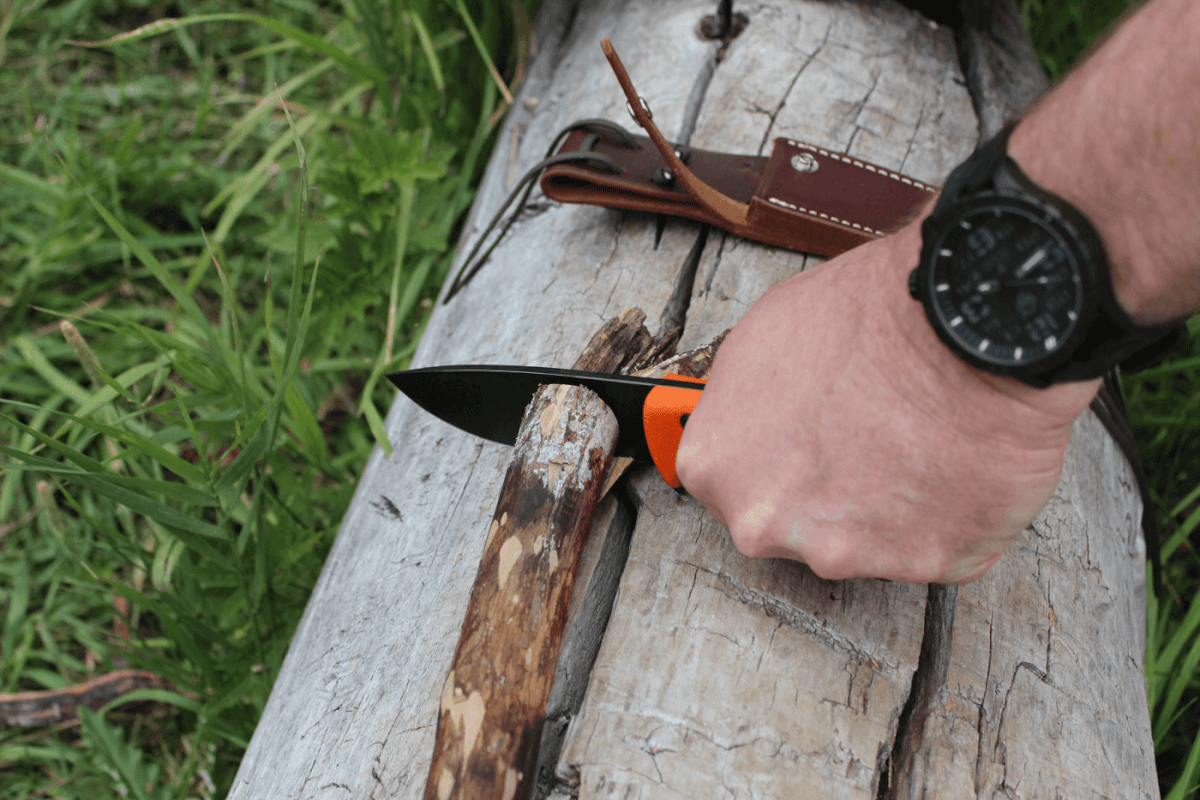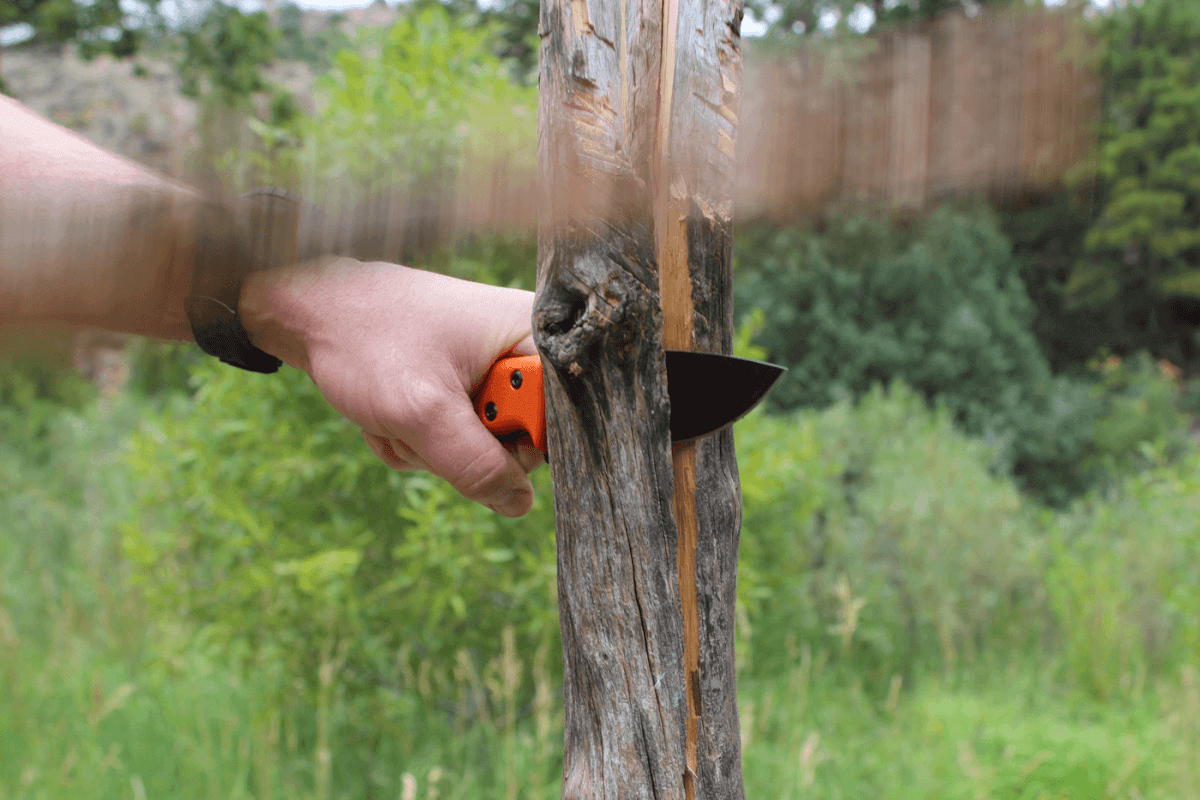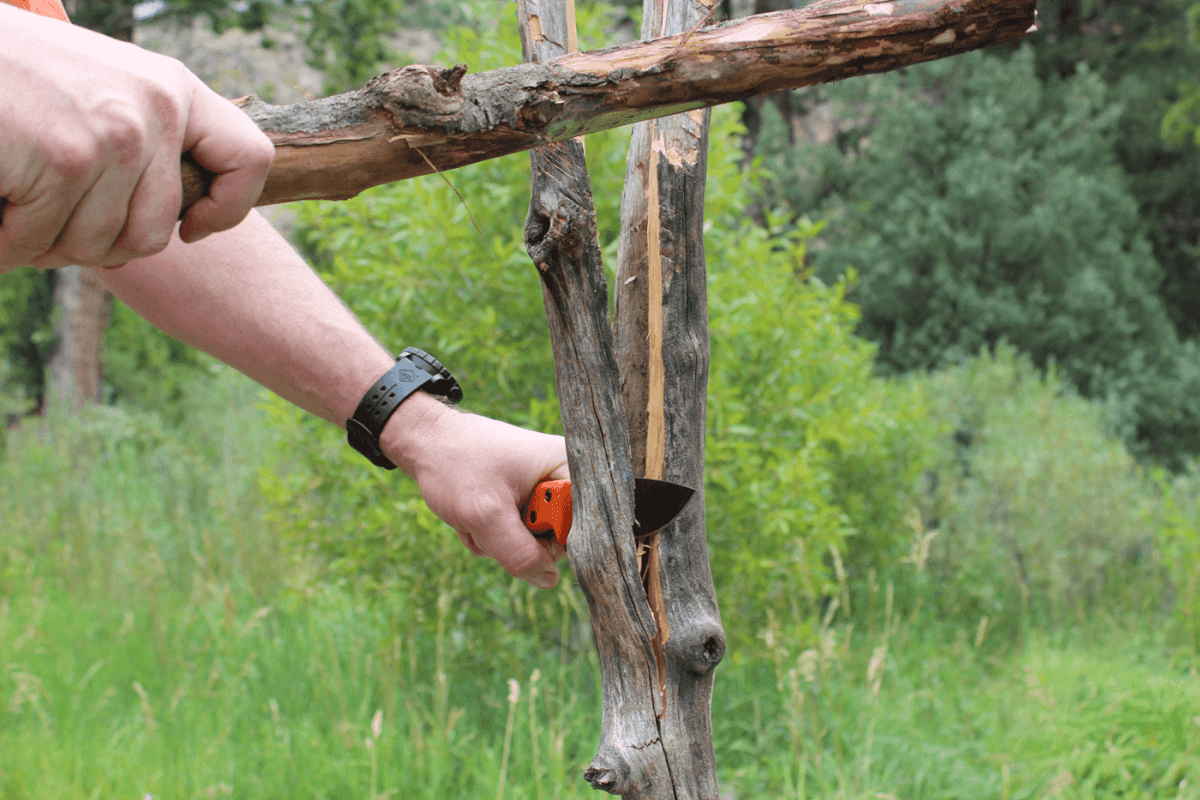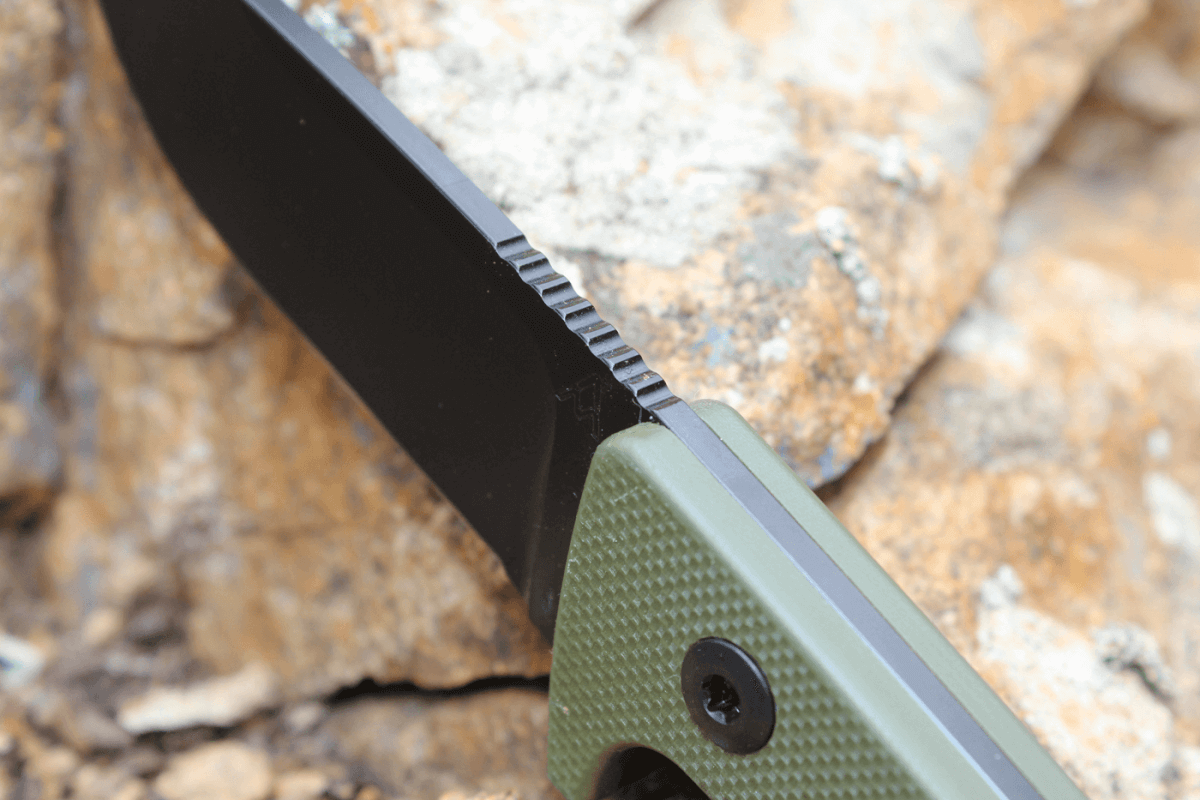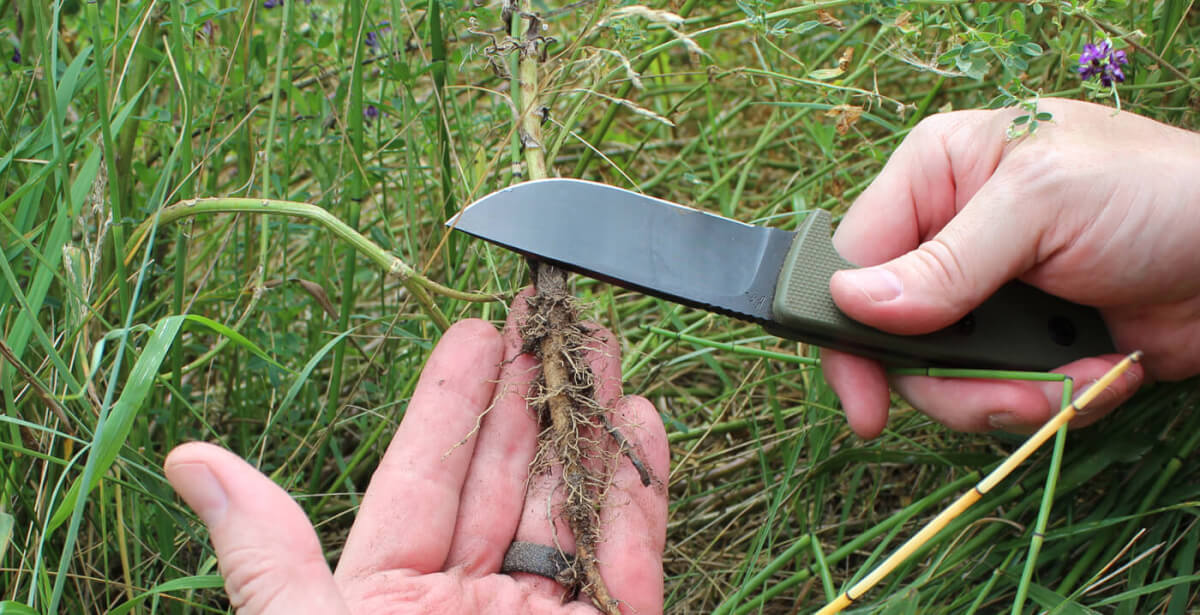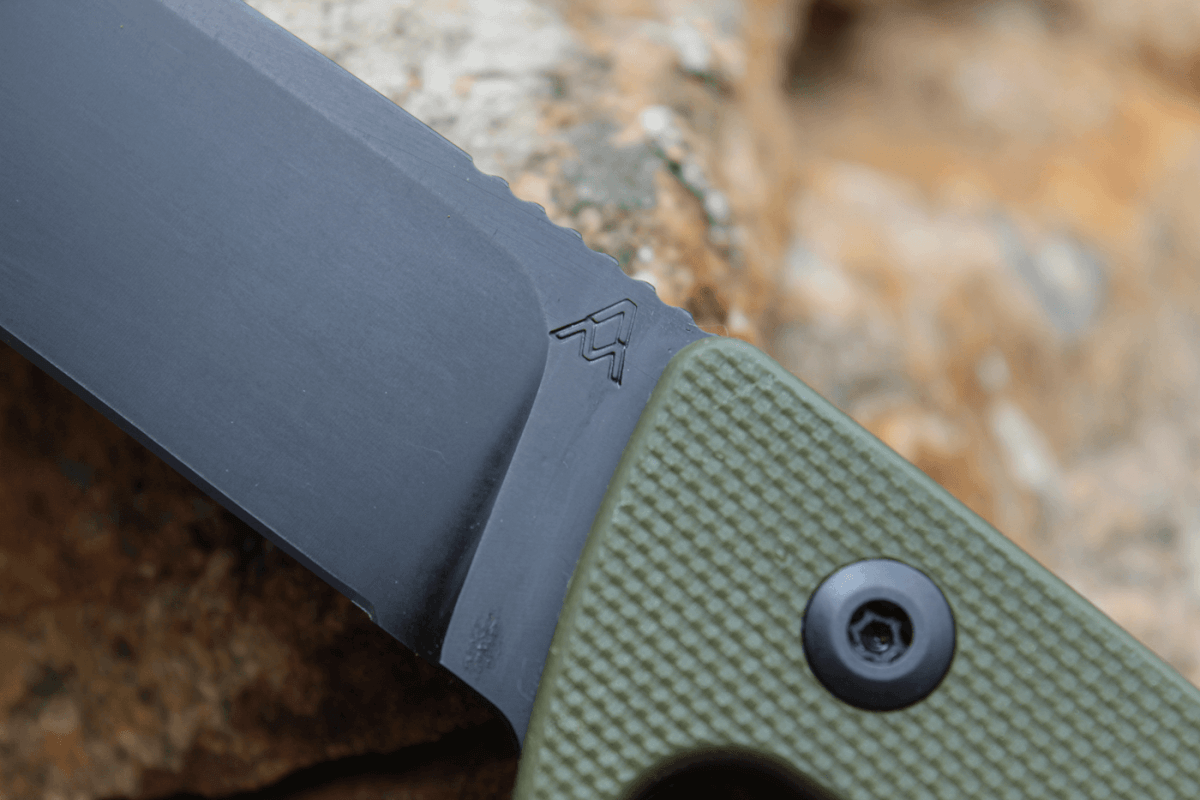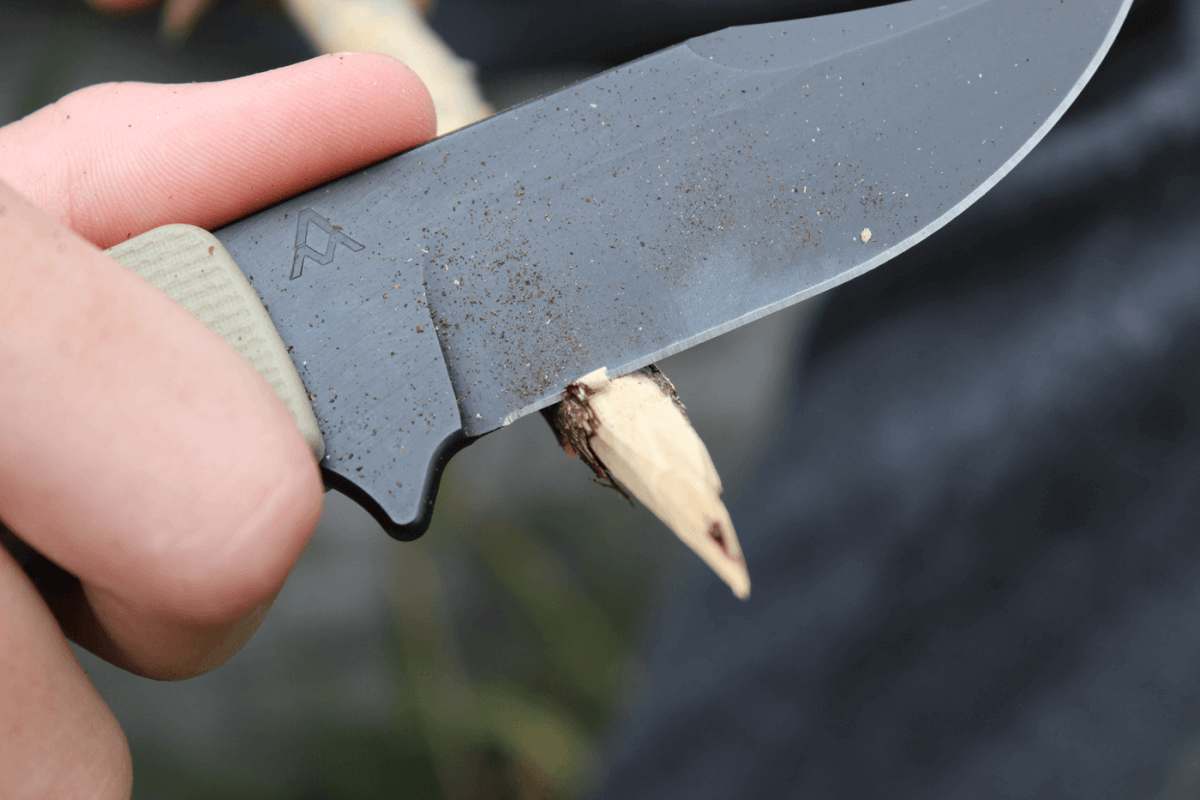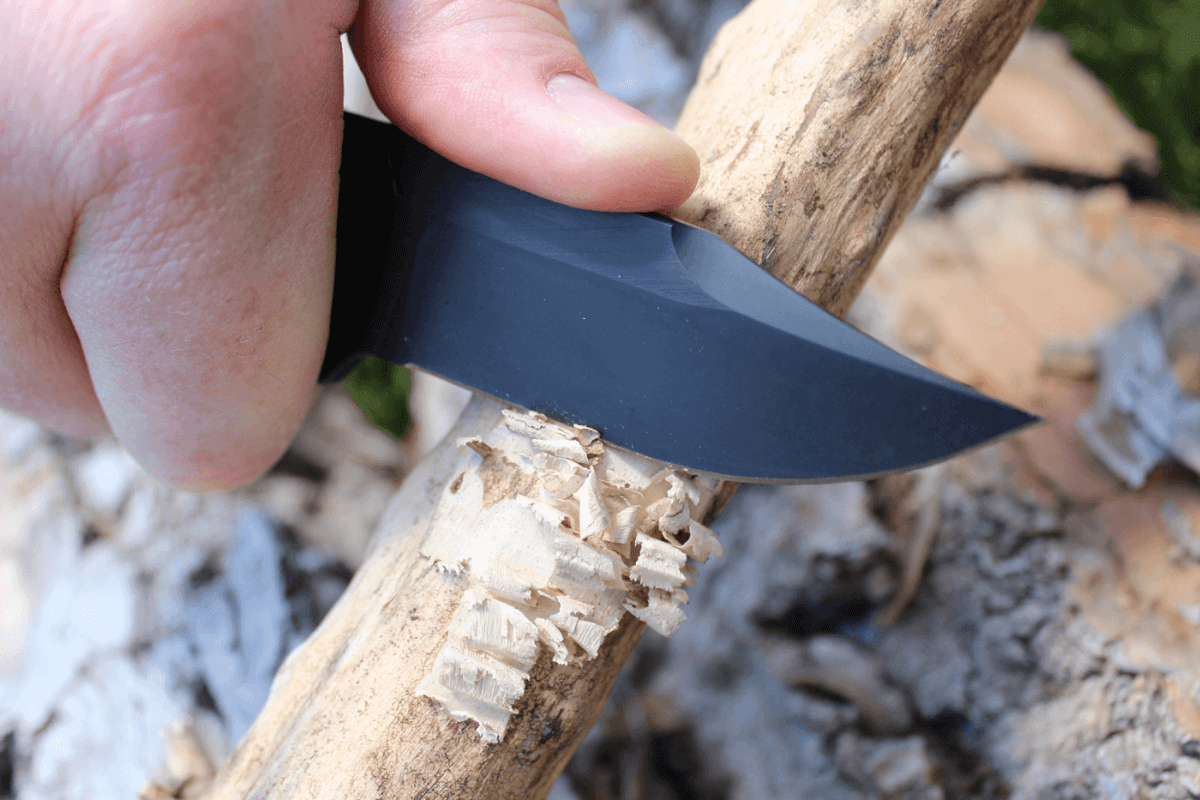It’s not uncommon to see knives at gun shows. After all, many people consider a firearm a multi-faceted tool capable of solving various issues.
This wonderful quality is also found in knives; hence, the attraction. What is uncommon is having a firearms company enter the world of cutlery—and knocking it out of the park on the first try. However, when you learn of the company backing Abe & Moe Knives, all the pieces begin to fall into place.
Bill Geissele (pronounced “Guys-lee”) is an entrepreneurial soul who attacks problems and conquers them with quality solutions. When he entered the competition shooting arena years ago, he could not find a trigger that met his needs, so he designed one. That solution soon became an empire named Geissele Automatics, a company that makes high-quality gun parts, tools and other accessories. (If you don’t know anything about Geissele, it is known for over-engineering its products—and it enjoys a sterling reputation.)
More recently, Bill’s son, Abraham, approached him and asked to make a knife. True to character, he built a knife and then created a company called Abraham & Moses, named after his sons.
While the Goodman Knife (Special Forces/combat) debuted at SHOT Show 2017, three more knives oriented to outdoor uses filled out the line in 2018: the AM-1, AM-2 and AM-3.
Unboxing
These three knives all arrived with a cardboard sheath around the blade. Taking these off, I found a deep-green wax had been used to cover each blade nearly to the hilt. A warning comes with the knives that tells you they are razor-sharp, which explains all the extra protection
I took each out and set it on the bench. After peeling off the wax, I was able to admire the three different approaches. (Every time I see three similar things of small, medium and large size, I am reminded of the tale of the Billy Goats Gruff and the beating given to the mean, old troll who lived under the bridge.
The AM-1 is a beast. Marveling at its shape, I see camp use, bushcraft and hunting written into its DNA. The G10 scales are curved in the middle with a bit of a belly to the bottom of the grip that adds extra fit in my hand. The handle is very ergonomic and designed for hard use. Weighing in at 11.9 ounces, the balance is nice, although grip-oriented. The blade is 4.6 inches long and .188 inch thick, with an overall length of 9.5 inches. You don’t get a Rambo sense from the knife, but when you pick it up, you understand it is a hard-use tool.
The blade design is a drop point with a nice belly. The full-tang knife (not skeletonized) has a built-in forward quillon on the bottom, preventing the hand from slipping onto the cutting edge. The scales come with a light, grippy texture, and there is a lanyard hole toward the pommel end.
The AM-2 is the militant midsized “brother”—smaller, quicker, but still very capable. This knife tells me it wants to be mounted to a tactical vest for those “just in case” moments. The blade is a drop point also, but leaner with no belly. The style strikes me as a relaxed tanto. The grips are thinner and flat and not swollen anywhere to fill the hand as does the AM-1.
Because of its blade length of 3.6 inches, .156 inch thickness and an overall length of 8.5 inches, you can see the knife is still very capable. The weight comes in at 7.3 ounces—much lighter but still up for hard use. Also full tang, this is the only knife of the three that has jimping on the spine of the blade. The forward quillon is very pronounced and is supported fully by the scales, which are designed to cover it. This implies the knife was meant for thrusting and retrieval, a more tactical approach.
Last, but not least, I picked up the AM-3. The first thing I noticed about this knife, despite being the smallest, is the clip-point blade—a diminutive Bowie, if you will. This is a go-anywhere, jack-of-all-trades type of knife. With a blade length of 2.75 inches, a thickness of .125 inch and an overall length of 6.5 inches, the AM-3 won’t frighten anyone, but it will cut anything you need and do it well.
Even though it is the smallest, at 4.1 ounces, the G10 scales still fit in my hand, although just barely. This little knife can do just about anything: skin small game, process plants and even some wood if needed. It would be at home in a tackle box, backpack, bug-out bag or even as an everyday carry knife.
Common Threads

All three knives have several genetic blessings from Geissele. They are made from D2 steel and are sharpened (flat grind) to 20 degrees. Right out of the box, they each push-cut paper and shaved hair. In addition, the blades are commercially differentially heat-treated. This means their spines are softer than the cutting surface, making them flexible, as opposed to fragile.
The blades I received were covered with something called Nanoweapon coating. This is a gift from the firearms side. As you might imagine, Geissele has some experience with metal under a lot of friction. This company is great about customization, so the nano-coating is an option. I can tell you it is tough … and very black. The substance covers the blade, even the tang under the scales, everywhere but the very cutting edge.
The blades all have a forward quillon to one degree or another, preventing forward slippage of the hand. All three have G10 scales, which can be ordered from the Abe & Moe website in a coarse or fine texture. I found the fine offered enough grip without wearing blisters during repeated testing.
The leather sheaths that accompany the test knives are absolutely quality rigs, although you can order the knives without them. These are the same sheaths that are made for Randall Knives—hand-crafted, heavily stitched and fashioned from oil-tanned saddle leather. I have dropped some coin on quality knives before and have lost them later, because the maker included a poorly made sheath. You will not have this problem with Abe & Moe. The sheaths all have a built-in belt loop and a strap that closes over the quillon with a classy, silver snap embossed with the Abe & Moe logo. The AM-1 has an added bonus of a paracord handle retainer and leg tie for extra retention.

I Went Into the Woods …
I looked forward to testing these knives with pretty high expectations. Mr. Geissele is not the type to let anything subpar out the door with his name on it. With a weekend trip into the mountains set, I leveled several different tests against the Abe & Moe trio to test their mettle and (metal).
After setting up camp, I quickly found some wood to process for tinder and kindling. I used all three knives for chopping and batoning to see how they would fare. With steady effort, each knife whacked through whatever I put it up against, first chopping through some wood to cut it to length.
I next split some larger wood, also with batoning. (The Nanoweapon finish appeared to be marred from the force of being driven through the wood—until I wiped it. The mark disappeared under the cloth.) Each knife split wood capable of its size.
The AM-1

- Overall length: 9.5 inches
- Blade length: 4.6 inches
- Blade thickness: 0.188 inch
- Blade steel: D2, differentially heat-treated
- Handle material: G10
- Weight: 11.1 ounces
- Sheath: Optional oil-tanned saddle leather
- MSRP: From $269
I used the AM-1 as an axe, lopping and chopping wood to test its limits. It processed several lighter woods and continued to be capable of shaving hair. I beat on its spine repeatedly, driving it through soft woods for various tasks. I actually felt the blade flex in my hand one time when trying to pry a bit harder than I should have. But thanks to the differential heat-treat, it resumed its shape.
Finally, after a full day of testing, I worked on some birch—a fairly hard wood—cutting various bushcrafting notches. I was impressed with the D2’s capability to hold an edge. Many knives would have faltered much earlier in the day. The AM-1 lasted a long while, and was able to carve out several notches in an unfriendly wood before it could not cut paper or hair again.
The scales were wonderful. Even with all the repeated tasks, I did not develop any hot spots or blisters from all the use, nor did the knife slip from my hand. I would also like to point out that I chose the orange-colored scales on purpose. While often described as “safety orange,” I did not go this route, because I feared some hunter’s errant shot. I had a camouflage canteen once, many years ago. That thing is still lying somewhere in the mountains of southwest Colorado. Losing water is bad enough, but losing a knife in a survival situation could prove fatal. I love the absolute visibility of the orange scales option.
One thing I noticed from the Nanoweapon coating was the lack of the ability to strike it against a ferrocerium rod. Using its 90-degree spine, I struck the knife against the rod several times, and it simply slid off without sparking. Nevertheless, I did not have a problem with this whatsoever. I understood inherently that the benefits of the nano-coating far outweighed the lack of strike from the rod. Besides, were I desperate, I would use the cutting edge of the blade to strike sparks. As it was, I carry an attached striker with each rod and was not about to sacrifice my sharpened edge. (Note that Abe & Moe does offer the knives in a “raw,” or unfinished, version as well.)
The AM-2

- Overall length: 8.5 inches
- Blade length: 3.6 inches
- Blade thickness: 0.156 inch
- Blade steel: D2, differentially heat-treated
- Handle material: G10
- Weight: 7.3 ounces
- Sheath: Optional oil-tanned saddle leather
- MSRP: From $229
The AM-2 got a severe dose of wood-testing, despite its apparent tactical pedigree. After breaking down a good deal of branches and larger sticks, I dug up a few salsify or oyster root plants and processed the edible portions. Stabbing and digging in the ground is a rough task best left to shovels, but a survivalist must rely on what they have. The AM-2 served well, still remaining sharp until the end of the day.
While the shape of the handle was not as comfortable as that of the AM-1’s handle, the weight did not require it. I ran this knife all day with no issues, had good grip and was never in fear of my hand slipping forward on the blade, despite the slippery nature of some of the tasks I used it for.
The AM-3

- Overall length: 6.5 inches
- Blade length: 2.75 inches
- Blade thickness: 0.125 inch
- Blade steel: D2, differentially heat-treated
- Handle material: G10
- Weight: 4.1 ounces
- Sheath: Optional oil-tanned saddle leather
- MSRP: From $189
Interestingly, the AM-3 did just as well as the others. While lacking the mass of the larger knives, it cut smaller wood adeptly, and its more-defined point was amazing for digging out smaller areas in notches, especially the triangular lashing notch. The point, belly and size of the smaller blade made me think of processing small game. I could imagine being able to easily dress out just about anything short of a moose with this blade.
In short, all three of the knives performed remarkably well. And while I am the first to admit I’m not the best knife sharpener, I gave it a whirl with the Gatco sharpening system. I had read that D2 was difficult to re-hone, but this was not the case. I was able to touch up the knives and get them cutting paper in a very short amount of time. When I reached out to Abe & Moe, a professional knife sharpener was recommended for handling the sharpening.
I was struck with the notion that there are many good knife companies out there that have fought long and hard—learning many lessons along the way—to earn the reputation they now enjoy.
By applying its principles of adhering to quality materials and over-engineering, Geissele has smoothly sailed from one demanding industry into another. It will be very interesting to see what direction the company goes from here.
Abraham & Moses
(267) 652-7000
Gatco Sharpeners
(256) 435-2227
Editor’s note: A version of this article first appeared in the January 2019 print issue of American Survival Guide.


